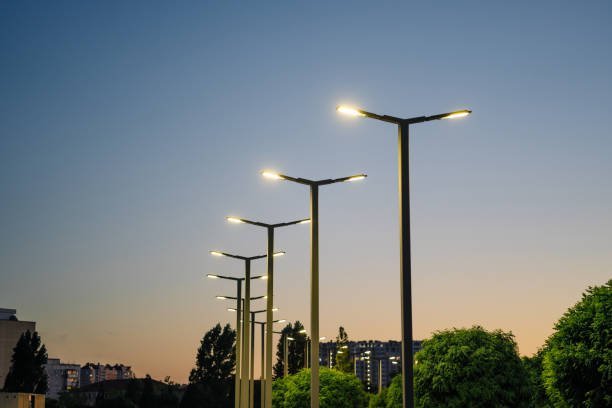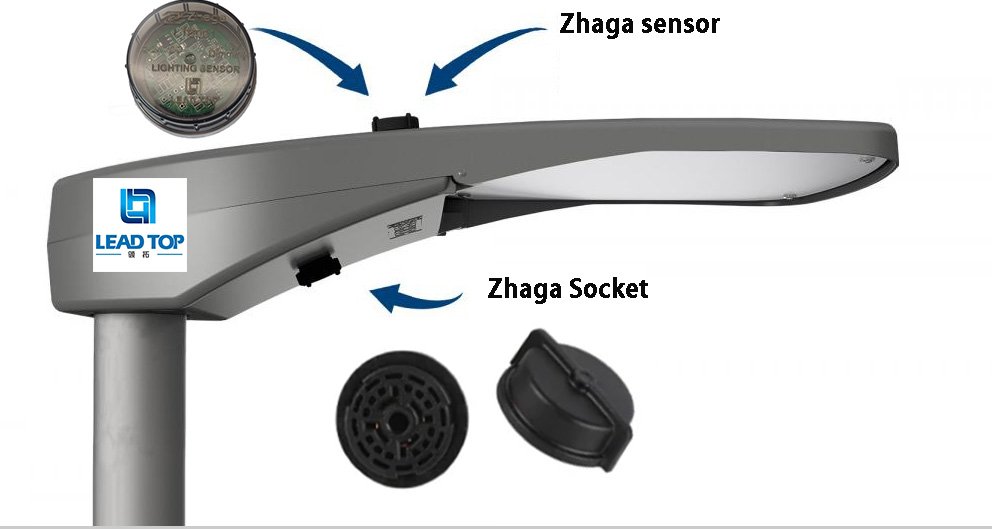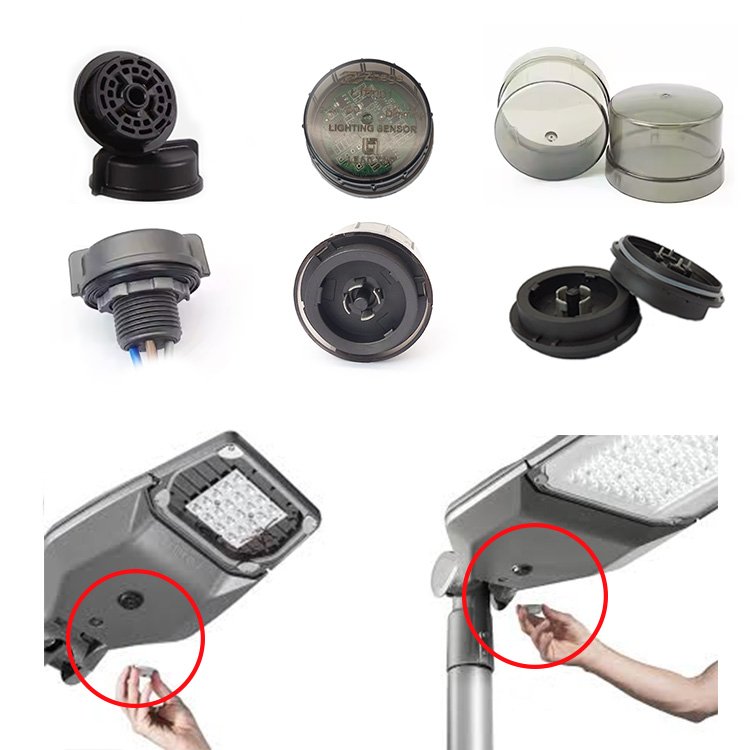Photocell sensors give outstanding energy and cost savings by automating outdoor lighting. Outdoor lighting is the most energy-intensive part of public and commercial infrastructure, such as streetlights and business exteriors need light for safety and visibility. Yet running these lights continuously wastes power and speeds fixture damage. This is where photocell sensors step in. By automating on/off switching based on daylight, they deliver both energy savings and reduced maintenance costs.
In this article, we explore how energy-saving photocells create measurable value, how they integrate into low-maintenance LED lighting, and why they are an essential part of modern smart lighting sensors strategies.
Photocells and Energy Efficiency
One of the most captivating arguments for photocells is their direct impact on energy efficiency. A photocell, works by detecting surrounding light as it turns the light on when natural light drops below a set level (dusk) and switches it off once daylight returns (dawn).
Why this matters:
| Factor | Without Photocells | With Photocells |
| Operating Hours (per year) | Fixed timer, often 12–14 hours/day | Adjusted to natural light, ~9–10 hours |
| Desperdicio de energía | High – lights run in daylight | Minimal – lights only on when needed |
| Human Error | Frequent (manual switch issues) | Eliminated through automation |
For cities with a lot of streetlights, this adjustment result in millions of kilowatt-hours saved annually. On a smaller scale, a single parking lot fitted with energy saving fotocélulas can lessen its electricity bills by up to 40%.

Narrative example:
Think of a suburban neighborhood having 500 LED streetlights. Without photocells, lights run 12 hours daily, regardless of changing day lengths. With dusk-to-dawn efficiency, each fixture works only 9.5 hours, and this saves over 4,500 hours of needless energy use across the system annually, which is equal to the energy needed to power dozens of homes.
Lower Maintenance with Automated Lighting
Energy efficiency is only half the story. Maintenance costs, often overlooked, play a massive role in a project’s long-term budget.
Key Benefits of Photocells in Maintenance:
- Reduced manual intervention: No more staff checking timers or switches.
- Extended fixture lifespan: Lights operate fewer hours overall, reducing wear on LEDs, ballasts, and drivers.
- Minimized electrical stress: Smart lighting sensors include surge protection and zero-crossing switching, which prevent component burnouts.
- Consistent performance: Photocells react to natural conditions, preventing the premature failure often caused by overuse.
Real-world insight: In facilities where maintenance crews had to manually manage lighting, average bulb replacement occurred every 18 months. After switching to low maintenance LED lighting with photocells, replacements extended beyond 3 years. This not only saved on materials but also reduced labor costs dramatically.
Cost Savings in Municipal and Commercial Projects
Municipalities and businesses both stand to benefit.
Proyectos Municipales
Cities that adopt photocell-equipped streetlights report clear ROI. For example:
- A mid-sized city upgraded 15,000 lights with energy saving photocells, and within 2 years, energy bills dropped by 32%.
- Maintenance calls for malfunctioning switches are decreasing by 45%, cutting crew dispatch costs.
Commercial Projects
Large commercial properties also see measurable savings:
- Parking lots having dusk-to-dawn efficiency systems not only save energy but also keep safety lighting which is consistent
- Warehouses having outdoor lighting control integrated into their security system lowered both power bills and theft-related incidents.
| Project Type | Ahorro de energía | Maintenance Savings | ROI Timeline |
| City Streetlights | 25–40% | 30–50% | 2–3 years |
| Iluminación del estacionamiento | 20–35% | 20–40% | 1–2 years |
| Campus/Industrial | 30–45% | 25–35% | 2 años |
These numbers show that photocells are not just an add-on but a financial driver in infrastructure planning.
Environmental Benefits
Past cost savings, smart lighting sensors deliver environmental value. Every kilowatt-hour saved gives reduced carbon emissions and achieves sustainability goals.
How Photocells Help the Environment:
- Lower carbon footprint: Widespread adoption of photocells around a city can reduce CO₂ discharge equivalent to keeping a lot of cars off the road.
- Support for dark-sky initiatives: Automated dimming prevents extreme nighttime light, reducing light pollution.
- Integration with smart grids: Photocells form part of smart city lighting controls, aligning with renewable energy policies.
Narrative example: A city that offers smart lighting sensors linked to photocells not only reduced emissions but also won recognition as a “green city,” attracting eco-conscious businesses and funding opportunities.
Partnering with Lead-Top: Reliable Photocell Solutions
As the benefits of photocells are clear, the quality of the sensor also matters. Poorly made photocells may flicker, misread light levels, or fail prematurely, negating their advantages.
Lead-Top Electrical has positioned itself as a trusted partner by providing:
- Certified performance: UL773, CE, and RoHS compliance
- Energy saving photocells with ultra-low power consumption, <0.5
- Customizable dusk-to-dawn proficiency thresholds
- Durability: IP66/IP67 waterproofing, UV-resistant, and great surge protection
- Flexibility: Compatible with LED streetlight control and Escondido

By choosing Punta de plomo, municipalities and businesses can make sure that their low maintenance LED lighting delivers maximum performance and reliability.
Takeaway: Why Photocells Are the Smart Choice
Photocell sensors are more than just switches; they are supporters of modern energy management. From dusk-to-dawn efficiency to reduced manual labor, they solve real-world challenges in both municipal and commercial projects:
- They save energy by reducing wasted operating hours.
- They reduce maintenance by extending fixture lifespans.
- They cut costs for cities and businesses, improving ROI.
- They protect the environment by lowering carbon emissions.
Final Summary Table
| Benefit Area | Photocell Impact |
| Eficiencia energética | Cuts energy waste by 25–40% through dusk-to-dawn efficiency |
| Costos de mantenimiento | Supports low maintenance LED lighting with fewer replacements |
| Ahorro de costes | Municipal & commercial ROI achieved within 2–3 years |
| Environmental Value | Smart lighting sensors reduce CO₂ emissions, fight light pollution |
As urban environments develop, the role of outdoor lighting control will continue to increase. Future photocells may unite with AI-driven smart lighting sensors, converting not only to light levels but also to real-time traffic and weather conditions.
By partnering with trusted providers like Lead-Top, organizations stay ahead of trends and make sure that their lighting infrastructure is efficient.
Interested in bringing these savings to your project? Contact Lead-Top Electrical for a catalog or consultation on energy saving photocells and next-generation lighting solutions.
Referencias:







